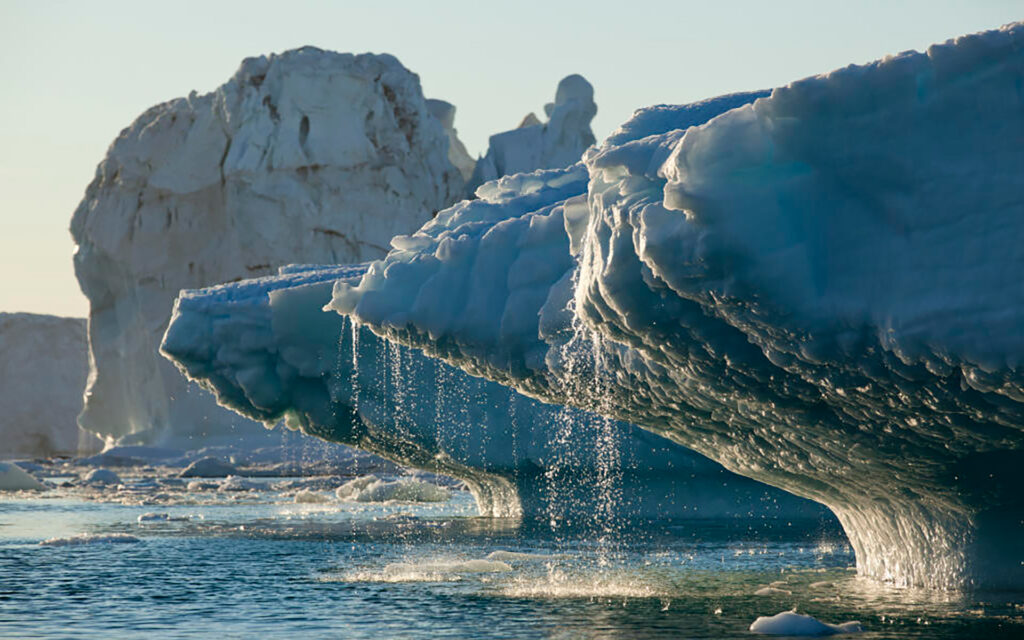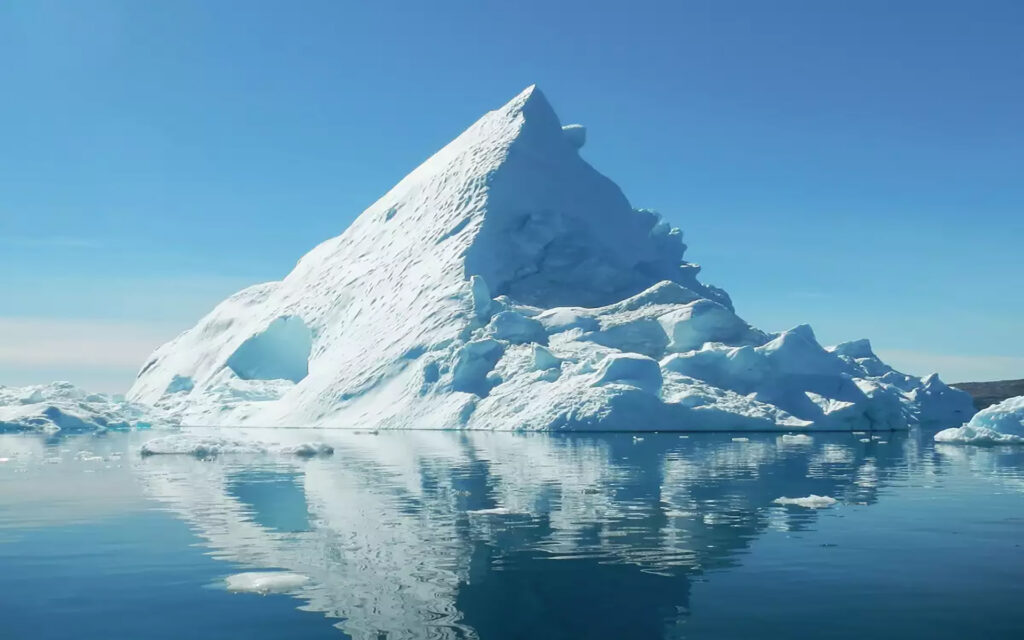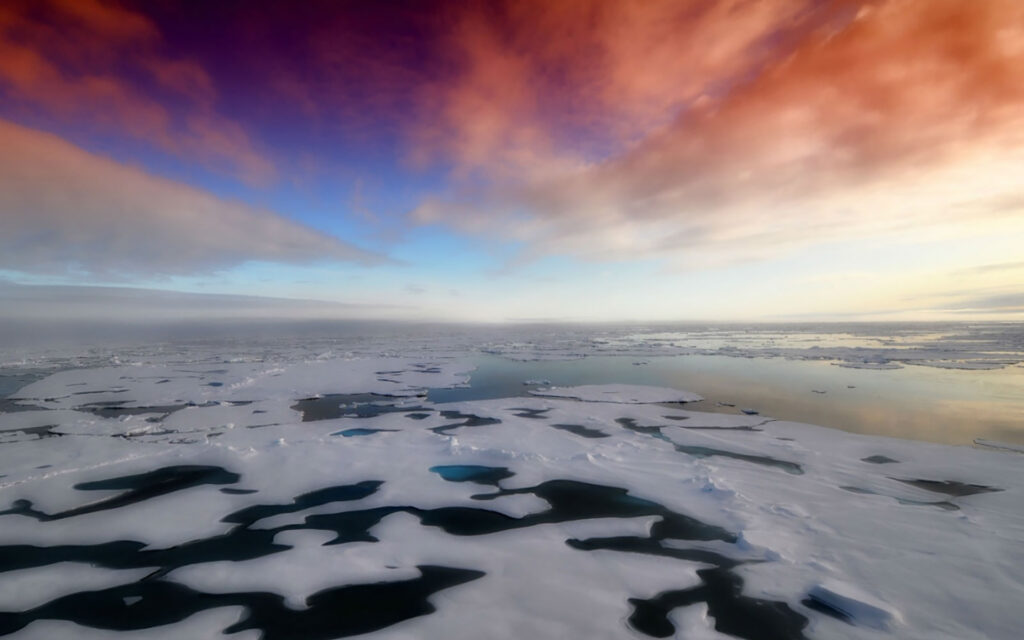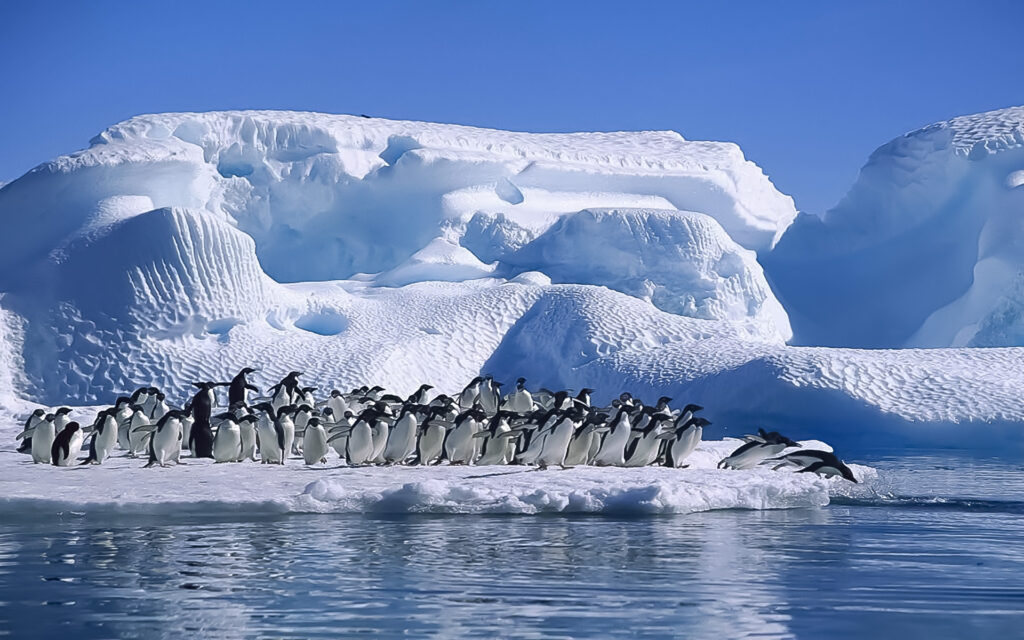As is well known, human action in recent times has harmed the planet’s health. Its consequences on the environment, climate, biodiversity and even our lives are already being felt. And its effects will only get worse year by year if we continue on the same path. One consequence is the increasingly accelerated melting of Antarctica.
The most remote and uninhabited continent on the planet is a mysterious and fascinating place for any scientist due to the lack of human intervention. Its difficult access and extreme climate make scientific exploration difficult. Nevertheless, it continues to be the object of interest because of its importance in global life and the secrets it hides behind its white mantle about the history of our planet.
It is thanks to this research that today we know about the inevitable loss of West Antarctica, its undeniable and unstoppable melting and the variations of the Eastern part.

To understand the impact, let’s start with the basics
The Antarctic and Southern Ocean Coalition (ASOC) classifies Antarctica into 3 main parts: West Antarctica, East Antarctica and the Peninsula, which is a kind of mountainous strip that extends north, as if pointing towards the American continent. This area is the smallest, representing 1% of Antarctica, but it is the most dynamic, as it warms and changes the fastest.
West Antarctica represents almost 10% of the continent. Although the highest peak in the region (Mount Vinson) is located here, under the ice most of this terrain is characterized as a deep basin away from the coast. This feature makes its surface more susceptible to melting, as it is exposed to temperature changes both above (air) and below (sea).
On the other hand, East Antarctica, with almost 90% of the area, is composed of rocky and mountainous terrain beneath the ice sheet. It is the coldest place on the planet, and despite the characteristics of its soil that kept it relatively stable, today it is showing worrisome changes.
It is also important to distinguish the types of ice on the continent. These are divided into 2: sea ice and land ice. And, as their names indicate, they are generated in the sea or on land.
Sea ice refers to the layer that forms in the sea after the water surface around the Antarctic continent freezes when the temperature drops. It is a seasonal phenomenon that occurs each year during the Southern Hemisphere winter season and melts each summer without affecting sea level rise. A commonly used analogy is that of ice in a glass of water: when it melts, it will not change the water level.
This type of ice is very shifty, as it floats by its intrinsic nature. It moves easily with tides and winds. The tide will also condition its thickness, becoming denser and deeper in the calmer parts, while in the stormier parts it may barely crystallize.
At its peak, this ice sheet covered an area similar to that of Antarctica itself, doubling the size of the continent (which alone is much larger than the entire United States). However, in recent years it has reduced its extension to such a degree that in 2023 it recorded the smallest size since 1978, when its monitoring began, according to France24. The cause: climate change and its effect on the warming of the seas.
Sea ice, although it may not seem like it, plays a fundamental role in the whole earth, and of course, in the species of the area. It not only protects underwater ecosystems. It is an important habitat for different organisms and species such as phytoplankton, Antarctic Krill (fundamental in the Antarctic food chain that it protects by allowing them to reach maturity for the change of season), and the Emperor penguin (who reproduce, incubate, breed and mature during the months of frozen sea. A decrease in ice, its weakening and consequent fragmentation would endanger entire generations).
And not only that. According to ASOC, its formation helps keep the planet’s climate cool: it reflects 50% of solar radiation, even up to 90% when it is thicker, and allows fresh snow to gather on it. It also helps ocean circulation: when seawater freezes, it cannot hold as much salt, so it sinks and slides down to the depths of the ocean under its own weight. This generates a cascading effect, which drives huge ocean currents around the globe, preventing the ocean from overheating and moderating the global climate.
On the other hand, land ice is that which is found on the continent itself. It is that which falls in the form of snow on the territory itself and accumulates in layers, contracting and hardening as new layers are added. These layers can be hundreds of meters thick, accumulated over thousands of years.
When this ice breaks apart, icebergs or shelves will form, depending on the characteristics of the break-off. Icebergs are fragments of glacier (therefore freshwater) that have fallen into the sea (or lake). Ice shelves, on the other hand, are broad portions, plateaus, or floating extensions of glaciers that have broken away from the continent and are slowly sliding into the ocean.
These shelves are important for the preservation of Antarctica because they protect the land ice mass behind them. They serve as a protective barrier or containment, preventing the continent from thawing so rapidly and consequently preventing sea level rise.

We are the problem
Human activities, mainly generated during the industrial revolution, have caused the environmental problem we are facing. It is a pollution that has not diminished in impact to this day. Perhaps it reached new heights during the last century, with wars, population explosion, urban growth, globalization, and many other rapid changes that occurred during that century. On the other hand, this was also when we began to inquire about our role in the life of the planet and its consequences.
Current research shows that the Earth’s ice is decreasing significantly. The increase in temperature as a result of global warming and greenhouse gases is intensifying, especially at the poles. According to the WWF, glaciers make up 10% of the Earth’s surface. Of these, 90% are in the south, in Antarctica, and the remaining 10% in the north, in the Arctic, especially Greenland.
Both poles are losing ice.
Perhaps the most vulnerable region to extreme weather events is the Antarctic. An already complex place, with high natural variability, which, added to global changes in temperature, is at a breaking point and will play a vital role in the development of the planet’s future events.
Over the last century, with the excess of greenhouse gases, the Earth has been exposed to accelerating events of concern. The way in which heat is displaced, changes in circulation, tidal and wind patterns are threatening the landscape of the Antarctic continent as we know it. And this, in turn, that of the entire planet.
One of these changes is the balance that the sea ice used to have: it melted in the warm seasons and replenished in the cold ones. Now, with rising temperatures, the ice is melting faster than it is freezing. As a result, more areas of the Earth’s surface are exposed to warm currents that make their way to the coast and threaten to move the ice sheets faster into the ocean.
The latest analyses indicate that accelerated melting of West Antarctica is inevitable. The melting of its shelves is imminent and will be up to 3 times faster than in the previous century, according to The Guardian. There is no way to stop it. Even if the Paris Agreement targets to keep global warming below 1.5°C (equivalent to the pre-industrial era) were to be met.
With the melting of the West alone, the volume of water that would increase in the oceans would forever change the geography of the planet. Not to mention the entire continent. Antarctica, the world’s largest ice mass, would add some 58 meters to sea level, according to the BBC.
Life on the entire planet would suffer the consequences. Rising sea levels would have an impact on every ecosystem.

What would happen?
Glaciers act as a sun repellent. Their white surface allows excess heat to reflect and bounce back into space, helping to keep the Earth’s temperature from rising. This temperature regulating function of Antarctica is complemented by the ability to cool the water beneath and around it. Sea ice prevents the waters from warming.
An interesting phenomenon happens here: a loop cycle called the Ice Albedo Effect. As the BBC explains, as there is less sea ice, more areas of the ocean will be exposed. The more exposure of these dark areas (in contrast to the white of the ice), the more heat from sunlight will be absorbed rather than reflected. Which means the temperature of the water (and the planet) will increase, and that in turn will melt more ice. An endless cycle.
In addition, sea level rise is evidenced by the recession of the landline (coastal erosion), the retreat and shrinkage of glaciers, increased acidity in the seas, more frequent, disastrous and intense floods and coastal storms, such as hurricanes and typhoons. Natural disasters that are already evident today and will only get worse.
The feeding and migration habits of thousands of species will be changed. Many animals will lose their homes and become extinct. Activities such as fishing will become more difficult due to variations in the marine fauna: warm waters condition where and when fish spawn.
For humans, it will also mean the disappearance of important coastal cities around the world. Millions of people will be vulnerable and affected, causing them to move to other, more habitable areas. The refugee crisis will increase.
All species will be forced to adapt to the increase in temperature and the new global landscape.

Not everything is lost, yet
Although the studies show an inevitable trend toward the collapse of the southern ice mass, the goal is not to be discouraged. Scientists see these data as evidence of what is to come, to serve as a reminder to seek solutions to mitigate its impact. To be used as parameters on which to act, and to urge governments to take the necessary measures for such events.
Although imminent, there is no exact date as to when it will happen. Some platforms could be decades, others centuries. It is still difficult to predict and obtain accurate estimates of the speed and rate of displacement.
Regardless of the time remaining, measures and efforts to minimize the environmental impact are important, as they can help us to delay the event, especially in those areas still stable in the eastern part. The slower it progresses, the more time we will have to prepare.
There are consequences that we may still be able to reverse and consequences that we can prepare for as a society. We will have to adapt and take measures to be ready for the repercussions of our pollution.
The actions we take today will define the pace of global water increase in the future. A future that may be closer than we think.





